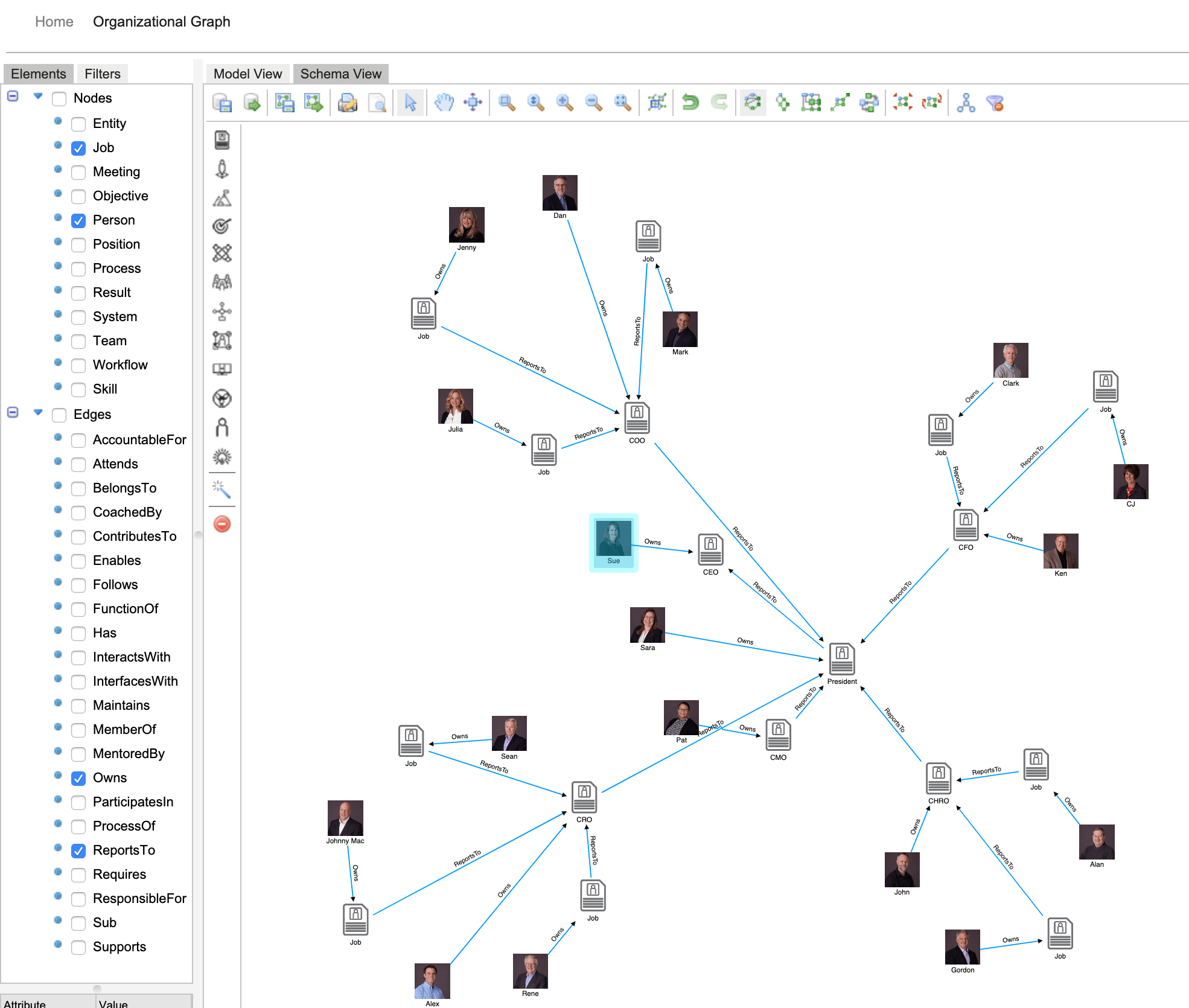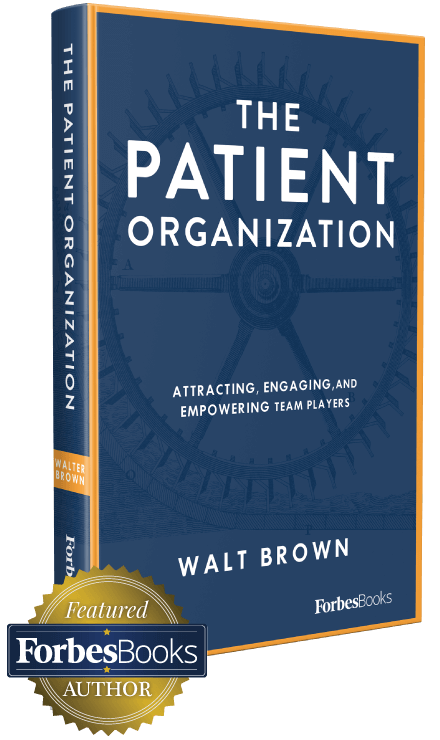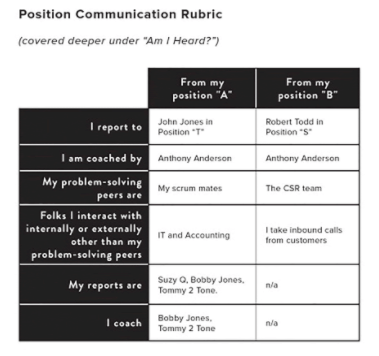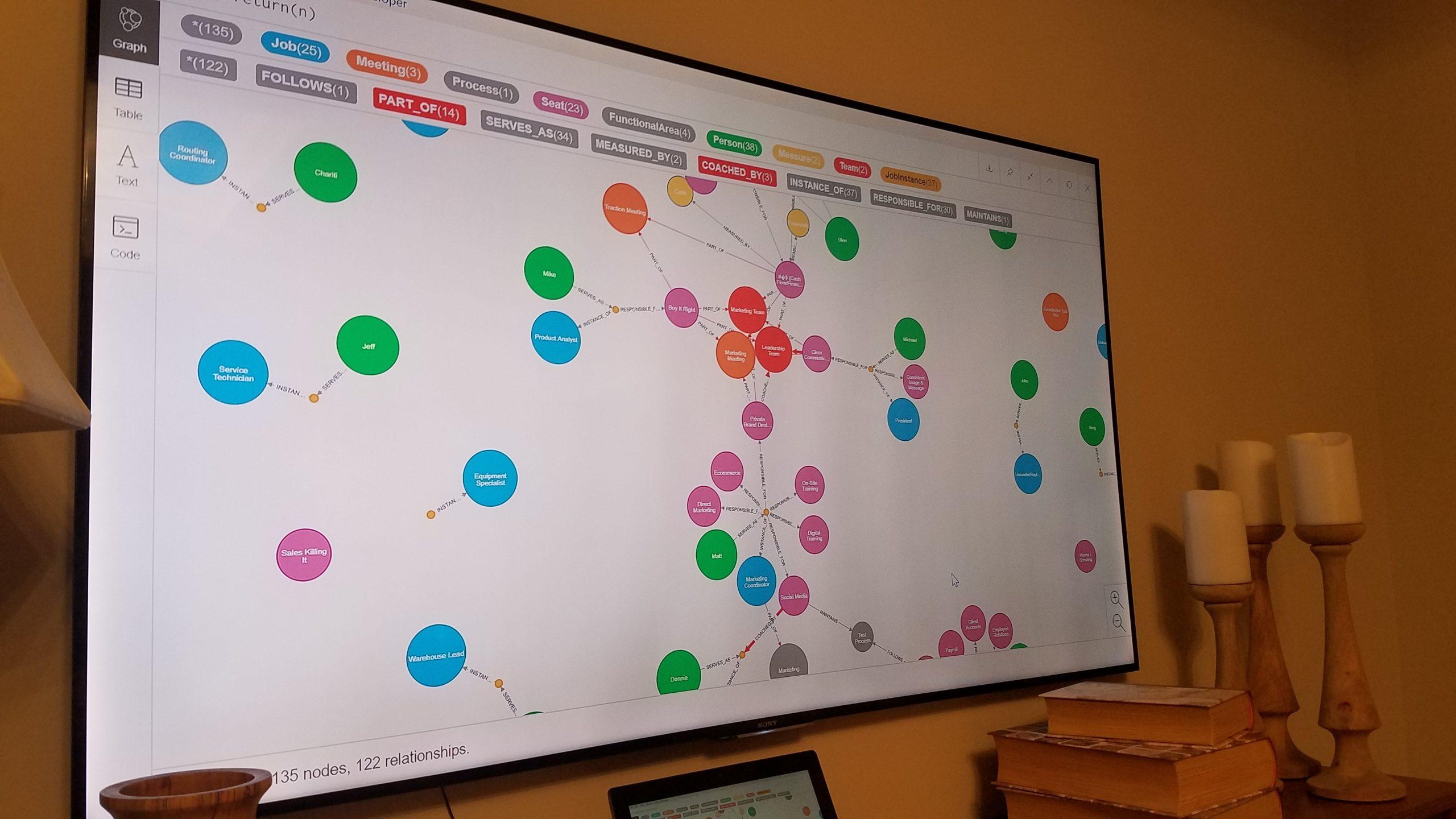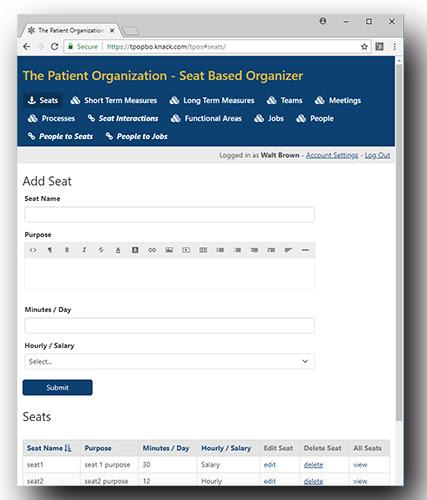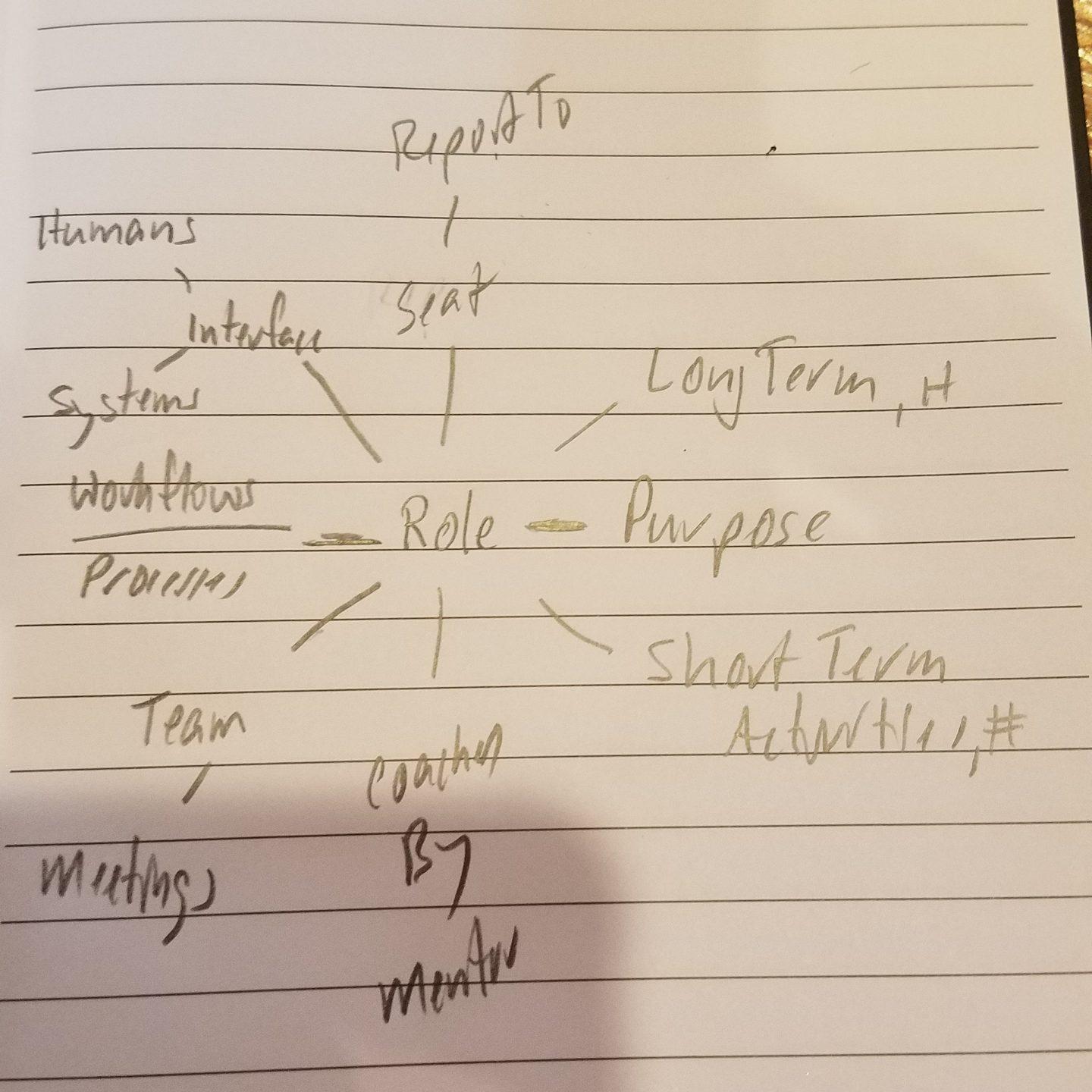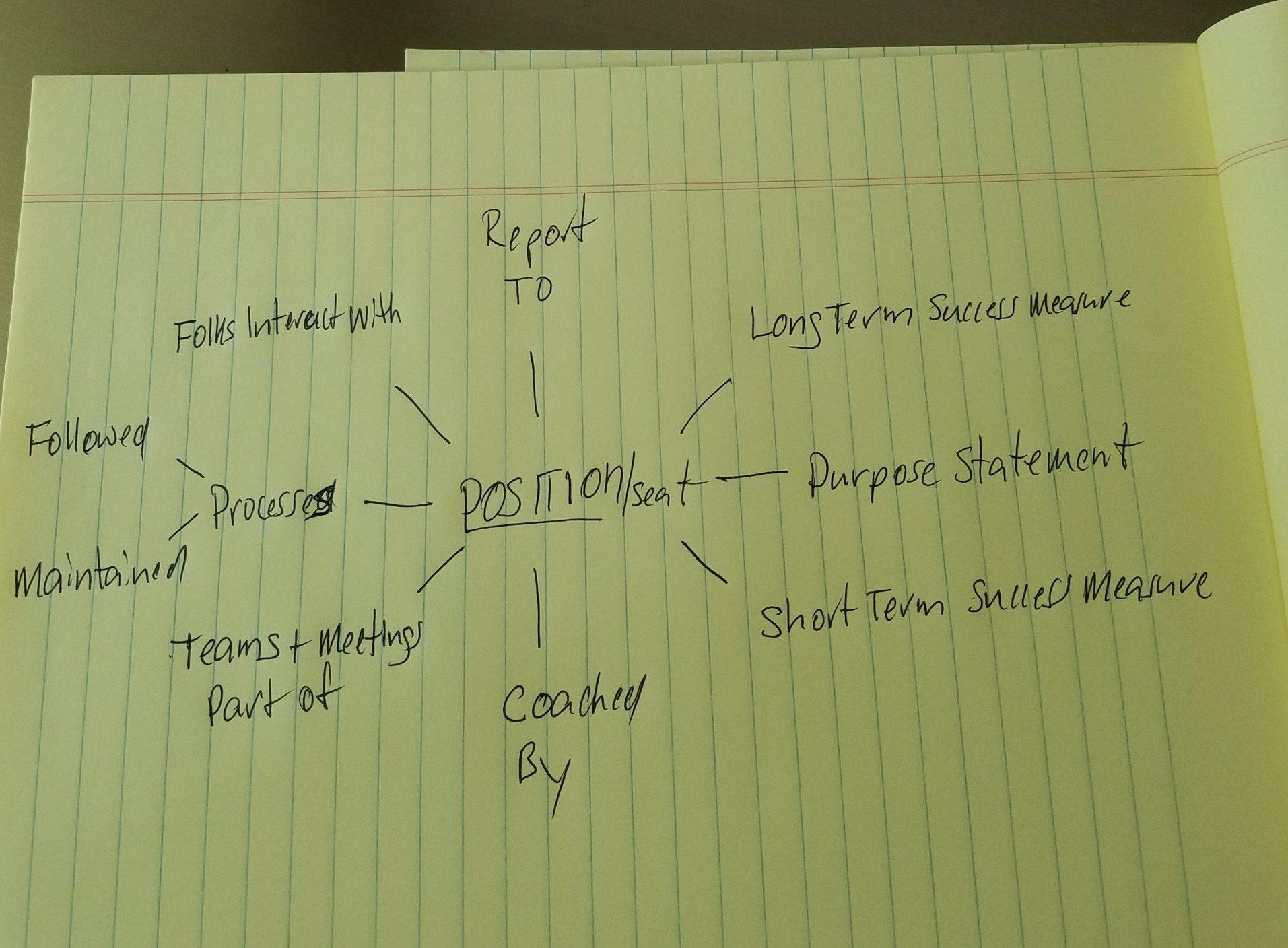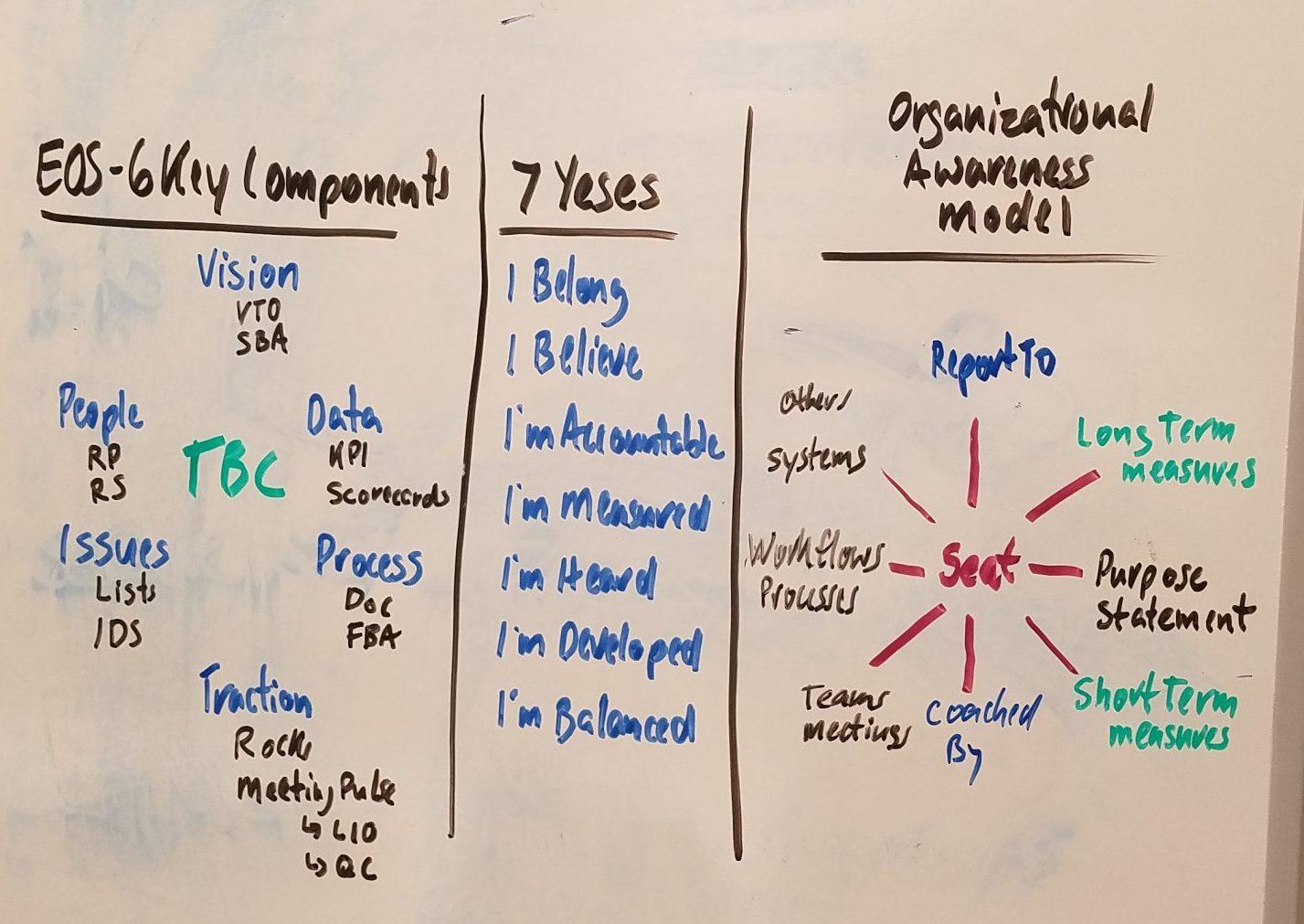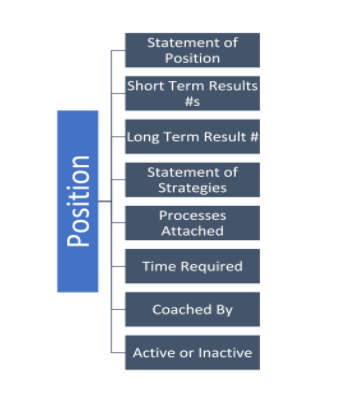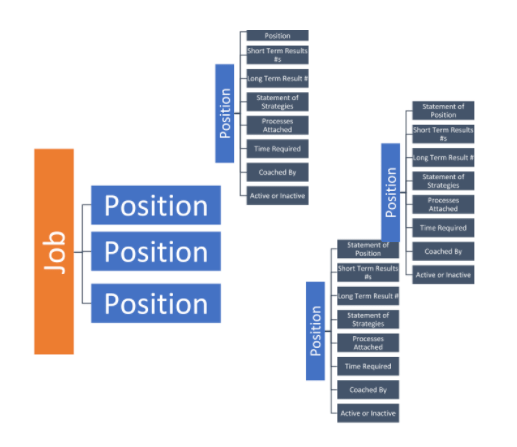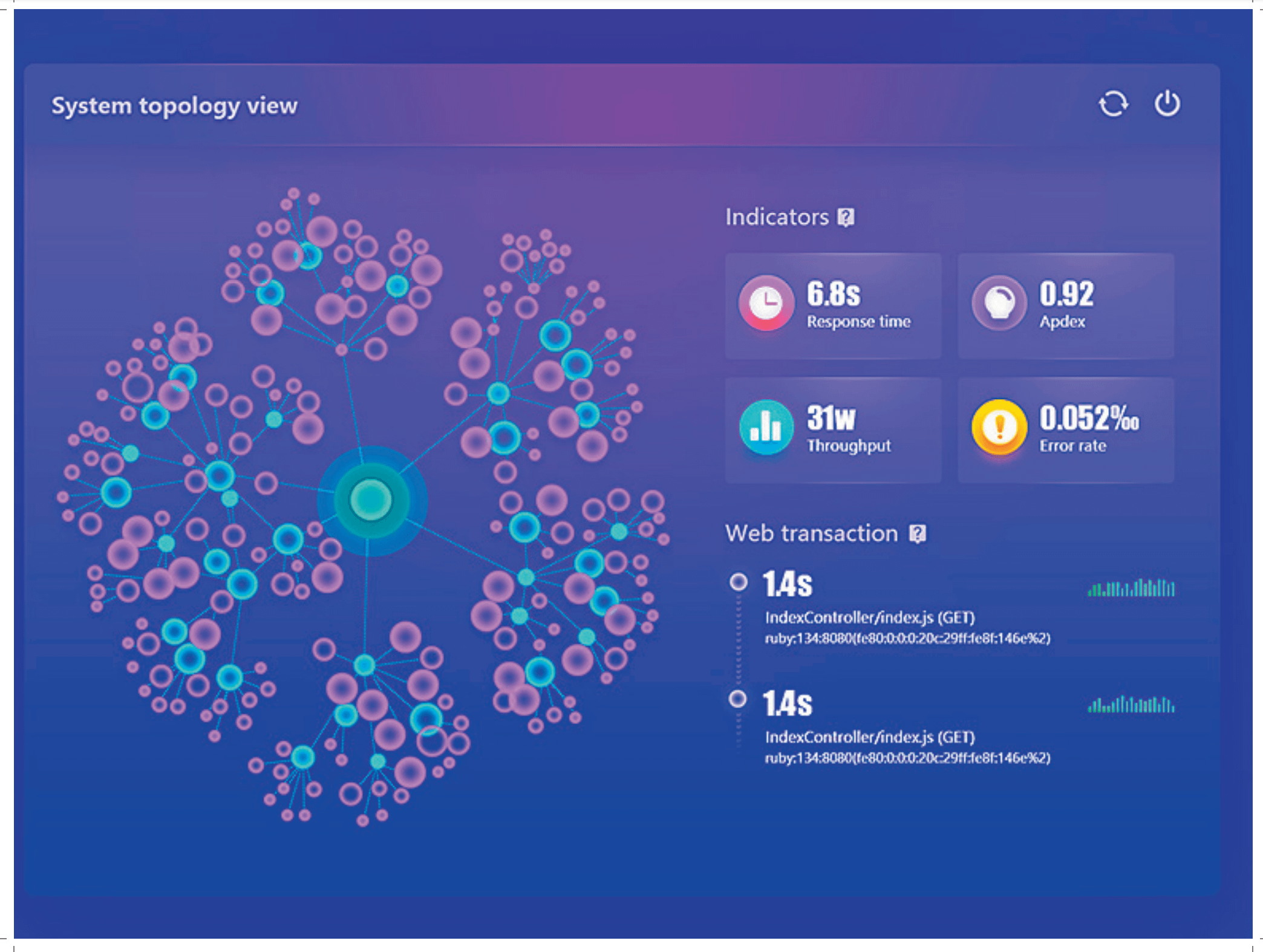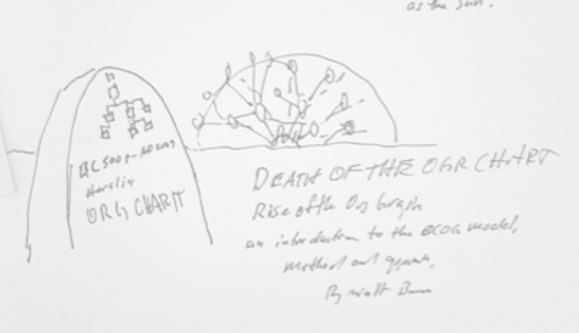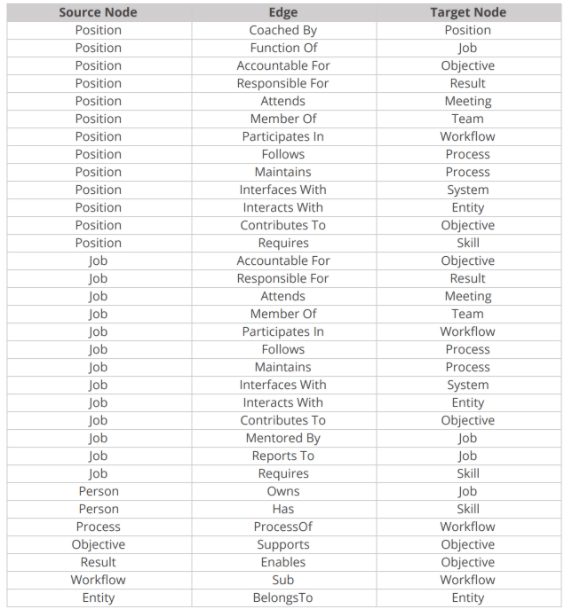Organizational Graph
An Organizational Graph also called an OGraph or Org Graph is a close cousin to the Organizational Chart manifesting as a network diagram showing the structure of an organization and the relationships and properties of and beyond jobs, positions, roles and responsibilities. An Organizational Graph leverages the underlying core Graph tenet that relationships between data have priority.
Contents
Overview
The difference of between an Org Chart and Org Graph is that an Org Chart is a two dimensional hierarchical, matrix or flat relational database where an Org Graph is a three dimensional network using the power of graph database schemas where relationships / edges have as much or more power as the nodes they are connecting.
History
In May of 2020, Walt Brown and team shared with the world the first Organizational Graph software based on his Organizational Cognizance Model and his Org Graph Database Schema.
In 2006, Brown began challenging his clients about the depth of an organization beyond a standard organizational chart, depth that had to be captured and mapped in order to understand the complexity of 21st century organizations – clarity that was not being accomplished in any type of Org Chart.
He published the Organizational Cognizance Model as a rubric in his first book The Patient Organization naming the nodes, describing the relationships and labeling the properties. – Forbesbooks 2018.
Shared here are some diagrams from Brown’s book The Patient Organization that he started writing in 2015 with the help of Barry Pearce and his father Walter Jr. He was already using the word “position” and was describing the edges of:
- I Report To;
- I am Coached By;
- My Peers Are;
- I Interact With;
- My Reports Are; and
- I Coach etc.
In The Patient Organization Brown referred to these interactions and relationships in a rubric where a Job or Position would need to have a Purpose Statement, a How I Fulfill the Purpose and how the Fulfillment is Measured.
The realization that the circles and relationship lines describing OCM and what he had been drawing on whiteboards since 2012 was an Organizational Graph came on May 18, 2018. At the end of a casual Starbuckcs meeting with Elias Hicks (Princeton ‘04). Walt drew his normal OCM model on a napkin and Elias says: “Oh, that’s a graph database.” From there Elias used NEO4J to build a working Organizational Graph and Chelsea Suriano and built a simple GUI using Zapier to feed the graph, Walt used it with his clients to prove the proof of concept, clients said yes please.
On March 9th, 2019 the collaboration stars aligned when, Walt called Brendan Madden, CEO of Tom Sawyer Software, described what he was looking for and Brendan said: “let’s do it” and OGraph.io as the first commercially viable Organizational Graph solution was launched with the deep help of Liana Kiff, Ansis Zvirbulis, Hugo Antunes, Patrick Madden and Epherpedix Acomedes.
Development of Organizational Graph with Early Photos
aCreation of Org Graph software.
Notebook, paper pad, whiteboard, computer.
All ideas and insights come from time spent perspiring before the inspiration comes. Walt Brown, the creator of Organizational Graphs, has been a steady daily journalist, always carrying a small black book with notes and thoughts, when the book was not at hand he would reach for something to draw on. His Kolbe is 8-3-5-5 the 8 means he likes to gather facts and create a strategy for the future, the second 5 means he can go both ways, but, it says he is a modeler, a visual thinker, wants to put his hands on something. This manifests as drawing and diagramming before writing. He is a Learner in CliftonStrengths and what Gallup tells him is his strengths manifest as a teacher. So imagine someone who is drawn to having a strategy to the future based on facts, thinking out loud through his drawing, constantly in the lab of a classroom, teaching, getting direct feedback and understanding or misunderstanding from his students. What we get is a constant sharpening of ideas through sharing, direct feedback and trial and error.
Here are more whiteboard, and flip chart drawings captured over the years while in the session room with clients.
Included is the thinking from May 12, 2018 where Walt spent the day in his session room with three whiteboards mapping out with post-its and whiteboard markers how the model might take place. From this work, he built the powerpoint images he shared with Denny Wilson for feedback.
Org Graph Software as a replacement for Org Charting Software.
The first Org Graph Software using Graph Database technology is https://ograph.io
First Complete Book On the Subject of Org Graphs
Death Of The Org Chart – Rise of the Organizational Graph
Walt started writing Death of the Org Chart – Rise of the Organizational Graph over July 4th holiday in 2019 with help from his trusted co-writer Barry Pearce, Death was published in April 2020, during the heart of the Covid crisis. Original drawing by Walt for the cover of the Death of The Org Chart Book
The Original Organizational Graph Database Schema
UnlinThe original Organizational Graph database model includes 12 nodes and 33 edges (connections / relationships) as charted below.
12 Original Nodes
- Person
- Job
- Position
- Meeting
- Team
- Entity
- Workflow
- Process
- System
- Objectives
- Key Results
- Skills
Original Node Descriptions
Job
People apply for Jobs, one has a Job, you list Job experience on your resume, your Job shows up in your Org Chart, your Job pays a certain amount in the budget. We have Job Descriptions. HRIS systems use the term “Job”. We use Jobs in Org Graphs
Position
A Position is a Function Of a Job in the Org Graph Schema. You can also think of roles or responsibilities. We use Position because we think it adds depth: you play different positions during the day, you take a stance, have an opinion from your position, you have a precise perspective from your position, you occupy a location in space and time as your organization moves – your Position.
Person
This is your entire bench. Org Graphs Extends beyond Employees to Giggers, Contractors, Volunteers, everyone impacting a 21st Century Org. People are the building blocks of buy-in, and your Organizational Graph helps them all commit by becoming cognizant.
Meeting
Meetings are an endless source of confusion and frustration for Individual Contributors. The Organizational Graph lays out visually exactly which Positions or Jobs Attend which Meetings. Note that it’s the Position or Job, not the Person, that has the connection to, or Edge with the Meeting.
Team
We need to be able to see and adjust who is on a Team, what are Teams doing and why. Yes, just like Jobs and Positions. Data shows that the popular shift from hierarchical to more Team-centric models can improve performance, but according to a recent Deloitte survey, only 6% of respondents rated themselves very effective at managing cross-functional Teams. We believe this is because they can not visualize how it all fits together. Unlike org charts org graphs map Jobs to Teams.
Entity
Entity is a broad group that captures a lot of thinking in an Org Graph. Typically, an Entity is an element outside the organization proper or outside of the Individual Contributor’s functional unit, an internal customer for instance. Yes, a customer, vendor, contract, project, department, division, or functional unit could all be represented as an Entity
Process
“How do I do that, why?” A Process can be a checklist, a work instruction, a photo, a video, a diagram, they are how we do our Job, how we fulfill the function of our Positions. For some reason, it is hard. With an Organizational Graph we make it easy by mapping Process to Positions and Jobs that are owned by a Person as part of their Job. This linkage creates cognizance and ownership, making it easy.
Workflow
In nerd talk: “Workflow refers to the steps involved in passing tasks or information from one Individual Contributor to another or one system to another for action according to procedural rules as value is added to the organization’s activities”. Workflows have become more and more digitized and automated, so much so that they have become what we refer to as “invisible workflows”. They still exist, we just need to bring them back out into the open so we have cognizance. In an Org Graph Jobs and Position objects connect to Workflows.
System
This is where an Org Graph really comes alive when advancing beyond an org chart. If you are logging in to it, it is a System. In 21st century organizations, Individual Contributors often Interface with dozens of Systems. Generally, a system is any element – often digital these days, though not necessarily – in which an Individual Contributor inputs data or work to have some function performed or info tracked. CRMs, the shared Excel spreadsheet, – all qualify as Systems. They often look like a fog-inducing bowl of alphabet soup to ICs, whose heads spin, trying to get a fix on which HRIS, ERP, CRM, IMS, LMS they login to.
Objective
Objectives are the big-picture things we’re aiming for, at the strategic level, and tend to be more qualitative than quantitative. (Note: when it comes to Objectives, the OCM ties into a strategy that Intel developed and Google extended called OKRs, or Objectives and Key Results.) In essence, all strategic thinking is a similar cascade model, and you can use Organizational Graph and the Objectives and Results nodes to capture and visualize this type of cascading thinking even if you don’t follow OKRs exactly.
Key Result
We are Accountable for thinking about Objectives, but Responsible for the actions that achieve Key Results. These Results are quantifiable and typically controllable, or measurable in the near term – could include hitting a particular sales volume, retaining a higher percentage of clients, boosting website visitors by a certain number each month, making a certain number of calls. In the OKR world, the basic measurement, the thing that has to be achieved, is the Key Result.
Skill
Skills refers to the talents, abilities, and knowledge that qualify someone to do a Job or fill a Position. Degrees, certifications, licenses, etc. are not Skills but often indicate a set of necessary Skills. For instance, someone certified as a Microsoft Office Specialist should have the Skills to comfortably navigate Office programs. Other Skills, such as “effective communicator” are harder to quantify and are sometimes labelled as “soft.” Yes, double black most difficult work, requiring Expert level thinking, but you can do it and capture it in yoour Organizational Graph.
The Organizational Cognizance Model and 14 Point Checklist
The combination of the above Nodes and Edges form the basis of how CEOs and Individual Contributors can complete this 14 Point Checklist
- What is the Purpose of my Job?
- What Positions do I fill as part of my Job? What is the Purpose of each Position?
- Who do I report to?
- Who is my Mentor?
- Who do I turn to for Coaching in each of my Positions?
- What are my Objectives?
- What are my Key Results?
- What Teams am I part of?
- What Meetings will I attend?
- What Workflows do I participate in?
- What Processes will I follow?
- What Systems do I interface with and need to master?
- What Entities (clients, projects, contracts, etc.) will I interact with?
- What Skills or Competencies do I need now and in the future?
About Walt Brown’s Background – The Creator of Organizational Graphs
About the Walt Brown
Since 2007, Walt has identified as a focused, full-time Implementer of the Entrepreneurial Operating System (EOS). He was the fourth EOSi in the system and has had the honor of guiding more than 160 companies through the process to graduation. Today, he is still an active EOSi but is circling in some extended orbits as the creator of the Organizational Cognizance Model, the “Christopher Columbus” of the Organizational Graph, co-founder of 7Q7P with Allen Cobb, and, via a 10x collaboration with Brendan Madden, is co-creator of a sophisticated Organizational Graph software solution we call an Org Graph that you can find at https://ograph.io.
Working exclusively with senior leadership teams and since 2006, Walt has averaged more than 130 days a year sequestered in session rooms, facilitating the gutsy work of working on one’s business. His work focuses on diving deep with companies and non-profits, helping them create accuracy and cognizance around who is doing what, why, and how. From this deep work rose the concept of what we call the Organizational Cognizance Model and the manifestation of Organizational Graph.
He started his work-life as an accounting and statistics guy with the CPA firm now called E&Y. He then founded four companies, selling all four in 2006 after twenty years at the helm, leaving that orbit and moving to his coaching and facilitation orbit.
Organizational Quotient
During a conversation on April 29, 2020 Alex Freytag came up with the idea of turning the 14 Point Checklist into an assessment of sorts to measure an individual’s OQ (Organizational Quotient), like and IQ or EQ approach. On the same day Allen Cobb pointed out that you could use the 14 Point Checklist as a survey to measure an entire organization’s OQ. So, the Organizational Quotient was born.
